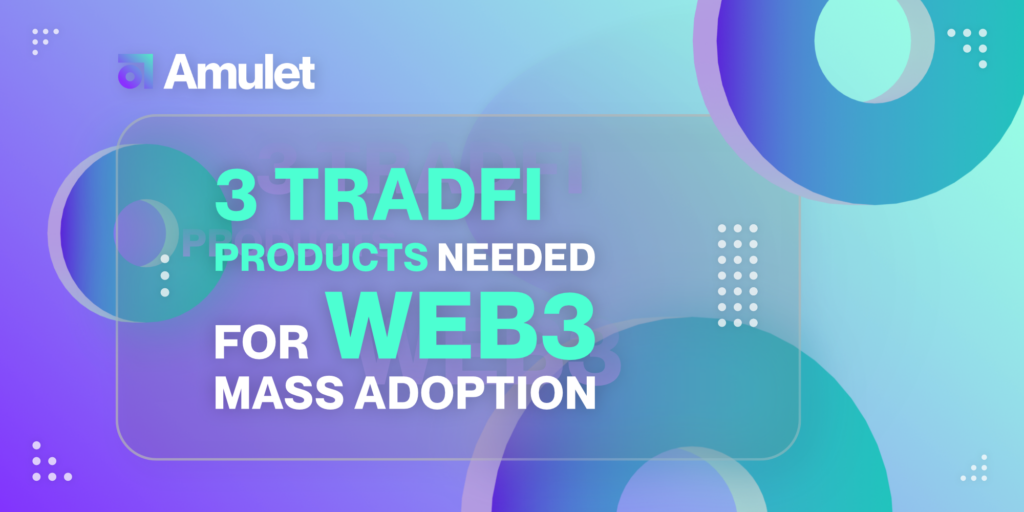Society needs to see the value of evolution and integrating TradFi into the metaverse.
The following article has been written by our Project Lead, Rupert Barksfield, as part of his duty within the CoinTelegraph Innovation Circle. We have uploaded it onto our blog post so that we can share it within our community and keep as a reference.
In recent years, DeFi has taken the crypto industry by storm.
One of the catalysts for this new future involves traditional financial (TradFi) products. Society needs to see the value of evolution and integrating TradFi into the metaverse.
What are the differences between TradFi and DeFi?
The two differ primarily on three main points.
First, in DeFi, a public blockchain (such as Ethereum or BNB chain) acts as the trusted source. It governs all the operations within the decentralized finance sector. In traditional finance, public governance, which licenses financial institutions and creates public legislation, acts as the trusted source. However, after recent years, you may question this trust.
Secondly, DeFi receives a lot of attention due to the projects’ commitment to openness and transparency. There is a lack of barriers to entry, which means that anybody with programming skills can build financial products and tools on top of a public blockchain.
Finally, cumbersome barriers to entry make it harder for the traditional finance system, and it’s difficult for them to embrace the emerging trend. The reason is due to the amount of administration and regulation needed to get started.
In my opinion, the following three traditional finance products are the most important products that need to be implemented in the blockchain space.
Everyday banking services
With the rise of newer neo-banks and improved digital banking services, we’ve seen an increase in the public embracing the mobility of banking. It’s become more common for the everyday person to transfer money, exchange currency and pay off bills all with a few clicks on their phone or computer.
With the introduction of DeFi, this is going to increase significantly. The biggest neo-banks such as Revolut and N26 are trying to enter this market by allowing everyday users the opportunity to “own” some crypto. This shows an attempt by upcoming financial organizations to bring crypto to the masses.
DeFi banks or banks that fully implement Web3 will allow users to be truly global without limits. Traditional banking has left many people behind. Countries such as Egypt, Morocco, the Philippines and Vietnam, for example, have an incredibly high unbanked adult population (over 60% according to the latest statistics).
More access to everyday banking services for these populations would lead to increased usage and better financial opportunities for people in lowly banked countries.
Credit and mortgage solutions
Although we’re entering a new digital generation, we still need to be offered credit or mortgage solutions to live a normal life. This traditional financial product has already started to become popular within the DeFi world.
Rather than going to your bank, and justifying your need for credit or a mortgage, DeFi would allow you to use cryptocurrencies as collateral and the borrowing is on your terms. This is beneficial as interest rates would no longer be controlled by the government, bank or the country’s economy, but rather regulated by the market itself, which puts control back into the hands of the people.
Although projects have been rising in recent months and years for banking and financial solutions with blockchain (a market of $1.17 billion in 2021), there is still a need for improvements before mass Web3 adoption.
Cover Options
Traditionally, many of us have home cover, electrical appliance cover, etc. We know there are risks involved in everything we purchase and therefore we need to protect against any wrongdoings.
As DeFi has continued to rise, so have the number of violations or hacks within blockchain platforms. According to InsurAce.io, a multi-chain crypto-cover protocol, March 2022 saw 36 major security incidents.
This means that cover options are necessary for the industry and the mass adoption of Web3. Risk protection protocols have started to generate traction in recent months and lessons are being learned to improve services, deter potential hackers and protect as many digital assets as possible
Web3 is expanding and so is the technology. Projects are introducing protection on events such as smart contract vulnerabilities and NFT theft. These could see vast improvements during the next 12 months and will enable increased implementation.
Better and more available cover products could also encourage traditional finance users to make the leap into the Web3 metaverse. One of the reasons why certain professionals hesitate with blockchain technology is due to the high risk involved as it’s a new concept.
So, when’s mass adoption coming?
It wouldn’t be wise to predict exactly when there will be more DeFi users than traditional financial users. No one could have predicted the rise of the industry from those first murmurs of Bitcoin in 2008.
Once everyday banking services, credit solutions and cover products have developed to a stage where they become “normal” for the general population, the user base should continue to grow.
Facebook and Twitter stormed to success after learning from early platforms like Hi5, Bebo and Myspace.
Traditional financial products and early DeFi protocols are providing the learning points for blockchain organizations to bring DeFi to become something that we all use and take advantage of.
Rupert Barksfield is the project lead of Amulet.org — simple, reliable cover for everyone in Web3.

